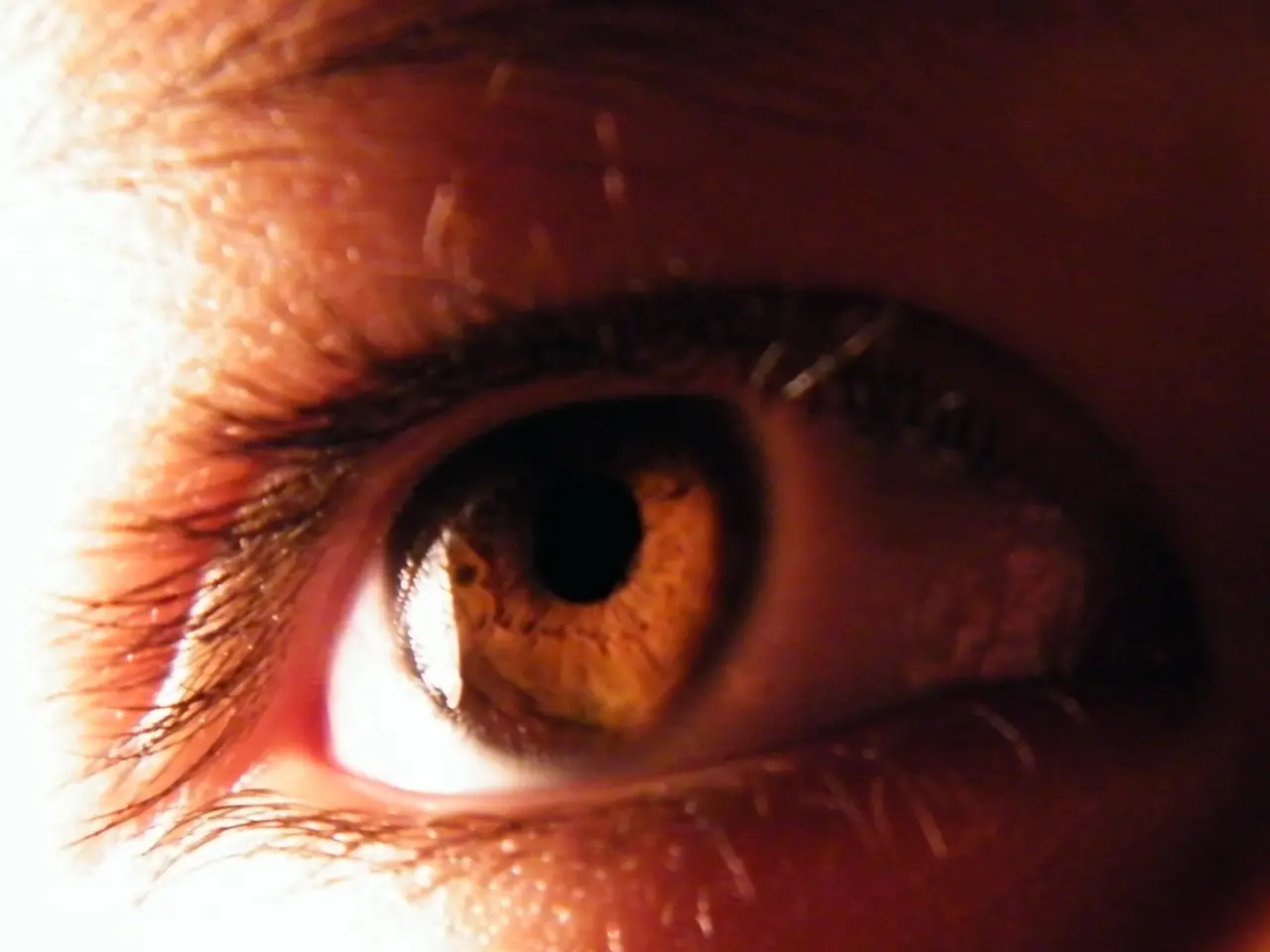Eyelid Eczema: Causes, Remedies, and Additional Insights
Eyelid dermatitis and eczema often manifest as red, itchy, swollen, dry, flaky eyelids that may burn or sting, and can develop crusting, oozing, or thickened skin in severe or chronic cases.
Common symptoms include redness, itching, swelling, dryness and flaking, burning or stinging sensations, crusting and oozing, and skin changes over time due to scratching. Early detection and trigger avoidance are crucial to prevent worsening or complications.
Triggers for eyelid dermatitis and eczema can be various, including allergens such as pollen, dust mites, and pet dander, irritants like cosmetics, soaps, and shampoos, environmental factors like cold, dry, or humid weather, and atopic dermatitis history. Contact allergens, such as nickel, latex, and fragrances, can also cause these conditions.
Treatment for eye eczema typically involves skin care practices, mild topical steroid medications, and topical calcineurin inhibitors (TCIs). TCIs, such as tacrolimus (Protopic) and pimecrolimus (Elidel), are a prescription treatment for eyelid eczema and do not thin the eyelid skin, but increase sensitivity to sunlight. A simple skin care routine free of fragrances and irritants is recommended for treating eye eczema.
It's important to note that there are several other conditions affecting the eyes that may look similar to eyelid eczema, including blepharitis, allergic conjunctivitis, psoriasis, rosacea, lichen planus, and dermatomyositis.
Atopic dermatitis, the main type of eczema, is caused by a genetic hypersensitivity to the environment and may increase a person's risk of certain eye diseases. Atopic, contact, and seborrheic dermatitis can cause eczema in the eye area. Atopic dermatitis is the underlying cause of seborrheic dermatitis, which affects the face, ears, eyebrows, eyes, and scalp and is more common in adults.
Contact dermatitis is caused by direct, indirect, or airborne contact with allergens or irritants. Common triggers for contact dermatitis include topical steroid medications, topical antibiotics, eye drops, metals such as nickel, cobalt, gold, and chrome, Shellac or acrylic nail products, fragranced skin products, and surfactants found in many baby shampoos.
Various complications may accompany dermatitis around the eyes, including pinkeye (conjunctivitis), inflamed cornea (keratitis), changes in cornea shape (keratoconus), cataracts, and retinal detachment. Early diagnosis and treatment of keratoconus can minimize potential vision loss.
Managing stress and anxiety levels can help reduce flare-ups of eczema anywhere on the body. To help prevent flare-ups of eyelid dermatitis, a person should keep known triggers or allergens away from the eyes.
[1] Mayo Clinic. (2021). Eyelid eczema. [online] Available at: https://www.mayoclinic.org/diseases-conditions/eyelid-eczema/symptoms-causes/syc-20372477
[2] American Academy of Dermatology. (2021). Eyelid Eczema. [online] Available at: https://www.aad.org/public/diseases/eczema/eyelid-eczema
[3] National Eczema Association. (2021). Eyelid Dermatitis. [online] Available at: https://nationaleczema.org/eczema/types-of-eczema/eyelid-dermatitis/
[5] Cleveland Clinic. (2021). Eyelid Dermatitis. [online] Available at: https://my.clevelandclinic.org/health/diseases/17189-eyelid-dermatitis
- Seekers of health-and-wellness solutions might encounter information about predictive science on the potential link between asthma and atopic dermatitis, a type of skin condition.
- Health entities should list medical-conditions like eczema, dermatitis, or skin-care concerns as personas to create personalized health campaigns for switchers to attract their attention.
- AQ monitoring can help identify environmental factors that trigger hst symptoms, such as lung conditions like asthma or skin-conditions like eczema or dermatitis.
- Advertisements promoting medical-care services can target personas affected by ankylosing spondylitis, cancer, or other medical-conditions, such as lung conditions or skin-care needs.
- Lung scientists researching the connection between asthma and atopic dermatitis have found that the majority of patients dealing with these medical-conditions experience severe depressive symptoms.
- Personas dealing with eye conditions like eczema, blepharitis, or dermatomyositis might take special care when selecting skin-care products to avoid irritants and allergens and minimize skin-conditions or complications.
- Medical entities concerned about the impact of eczema on vulnerable populations should focus their research on identifying early indicators for eye conditions and other medical-conditions among ethnic minorities or the elderly.
- Treatment for lung conditions like asthma often involves preventive strategies to minimize exacerbation, combined with bronchodilators, corticosteroids, or biological agents.
- Catering to the needs of those with medical-conditions can mean designing products or services specifically for persons dealing with skin-care concerns, depression, cancer, or lung conditions like asthma or eczema.
- Awareness about medical-conditions like eczema, dermatitis, or lung diseases should extend beyond the science community to healthcare providers, pharmaceutical companies, and health-and-wellness influencers to ensure comprehensive care and treatment options for affected individuals.




